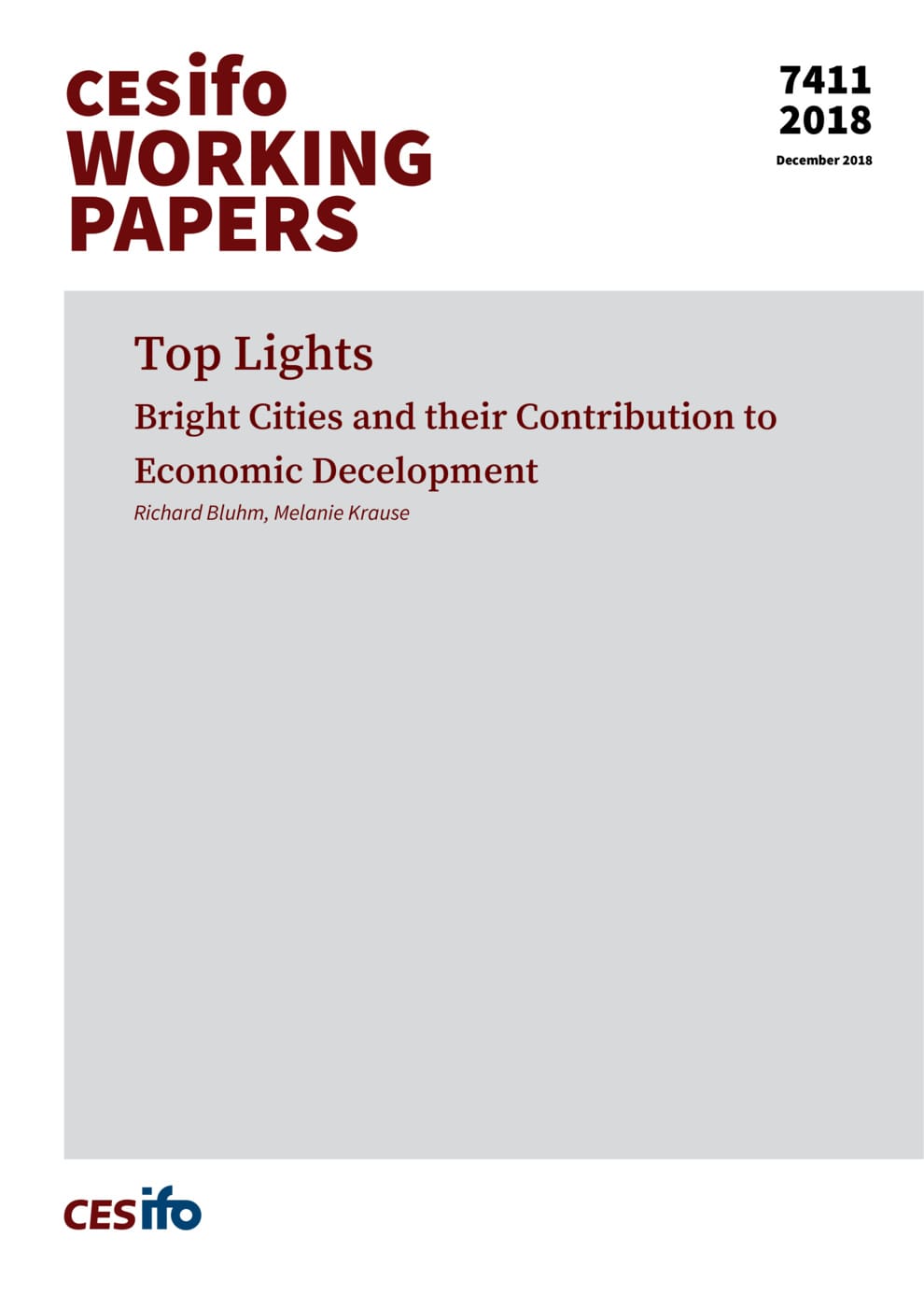Top Lights - Bright Cities and their Contribution to Economic Development
CESifo, Munich, 2018
CESifo Working Paper No. 7411

The commonly-used satellite images of nighttime lights fail to capture the true brightness of most cities. We show that night lights are a reliable proxy for economic activity at the city level, provided they are first corrected for top-coding. We present a stylized model of urban luminosity and empirical evidence which both suggest that these ‘top lights’ follow a Pareto distribution. We then propose a simple correction procedure which recovers the full distribution of city lights. Applying this approach to cities in Sub-Saharan Africa, we find that primate cities are outgrowing secondary cities but are changing from within.
Fiscal Policy, Macroeconomics and Growth
Empirical and Theoretical Methods